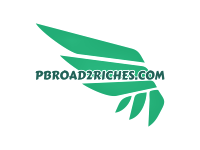Unlocking Passive Income Streams for Artists: A Comprehensive Guide

As an artist, your creativity is your most valuable asset. However, sustaining a living solely through commissioned work or selling physical pieces can be challenging. Fortunately, the digital age has opened up numerous opportunities for artists to generate passive income streams, allowing them to monetize their talent while pursuing their artistic endeavors. In this article, we’ll explore various sources of passive income for artists, complete with a detailed comparison table and outbound links for further exploration.
1. Print-on-Demand Platforms
Print-on-demand (POD) platforms have revolutionized the way artists can monetize their artwork. By uploading your designs to platforms like Redbubble, Society6, or TeePublic, you can offer a wide range of products featuring your artwork, from t-shirts and phone cases to wall art and home decor. These platforms handle the printing, shipping, and customer service, allowing you to earn royalties on every sale without the hassle of inventory management or fulfillment.
2. Stock Photography and Illustrations
If you have a knack for photography or digital illustrations, consider contributing your work to stock marketplaces like Shutterstock, Adobe Stock, or iStock. These platforms allow you to upload your images and earn a commission every time someone purchases a license to use your work. While the upfront effort is required to build your portfolio, this passive income stream can provide a steady flow of revenue as your collection grows.
3. Licensing Digital Art and Designs
Digital artists can monetize their work by licensing their designs to companies or individuals for commercial use. Platforms like Creative Market, Design Cuts, and Envato Elements offer marketplaces where you can sell your digital assets, such as fonts, graphics, templates, and more. Once your work is listed, you can earn royalties every time someone purchases a license to use your designs.
4. Selling Digital Products and Resources
As an artist, you can package your knowledge and expertise into digital products or resources for sale. This could include online courses, tutorials, e-books, or printable resources like coloring pages, templates, or patterns. Platforms like Skillshare, Udemy, or Gumroad provide a marketplace for selling your digital products, while also handling the payment processing and delivery.
5. Affiliate Marketing and Sponsorships
Artists with a strong online presence can explore affiliate marketing opportunities or seek sponsorships from relevant brands. By promoting products or services you genuinely use and believe in, you can earn a commission on any sales generated through your unique affiliate links. Additionally, brands may be interested in sponsoring your content or collaborating on promotional campaigns, providing another revenue stream.
Comparison Table
To help you evaluate the various passive income options, we’ve compiled a comprehensive comparison table:
| Income Source | Potential Earnings | Effort Required | Pros | Cons |
| Print-on-Demand Platforms | Varying royalties based on product sales | Moderate (creating designs, managing listings) | Wide range of products, no inventory management, global reach | Competitive market, platform fees |
| Stock Photography/Illustrations | Varying commissions based on image licenses sold | High (building a portfolio, keywording, promoting) | Passive income potential, global reach | Saturated market, low commissions for non-exclusive images |
| Licensing Digital Art/Designs | Varying royalties based on licenses sold | Moderate (creating assets, managing listings) | Passive income potential, global reach | Competitive market, platform fees |
| Selling Digital Products | Varying based on product pricing and sales volume | High (creating content, marketing, customer support) | Full control over pricing and content, recurring revenue | Upfront effort required, marketing challenges |
| Affiliate Marketing/Sponsorships | Varying commissions or fixed sponsorship fees | Moderate (building an audience, promoting products) | Passive income potential, leveraging existing audience | Disclosure requirements, maintaining trust |
Print-on-Demand Platforms
Print-on-demand platforms have emerged as a game-changer for artists looking to monetize their artwork without the logistical challenges of traditional merchandise sales. By uploading your designs to these platforms, you can offer a wide range of products featuring your artwork, from t-shirts and phone cases to wall art and home decor.
One of the key benefits of print-on-demand platforms is the low barrier to entry. Unlike traditional merchandise sales, which require upfront investment in inventory and manufacturing, these platforms handle the printing, shipping, and customer service, allowing you to focus solely on creating and promoting your designs. This eliminates the risk of unsold inventory and reduces the financial burden on the artist.
Popular print-on-demand platforms like Redbubble, Society6, and TeePublic provide user-friendly interfaces for uploading and managing your designs. You can set your own pricing and royalty rates, ensuring fair compensation for your work. Additionally, these platforms offer a wide range of product categories, allowing you to cater to diverse consumer preferences and maximize your earning potential.
Another significant advantage of print-on-demand platforms is their global reach. With customers worldwide, your artwork can transcend geographical boundaries, exposing you to a vast and diverse audience. Many platforms also offer built-in marketing tools and analytics, helping you track your sales performance and optimize your strategies accordingly.
However, it’s important to note that the print-on-demand market can be highly competitive, with numerous artists vying for visibility and sales. To stand out, you’ll need to create unique and compelling designs, leverage effective marketing strategies, and continually update your product offerings. Additionally, these platforms typically charge fees or commissions on each sale, which can impact your overall profit margins.
Stock Photography and Illustrations
If you have a talent for capturing stunning photographs or creating captivating digital illustrations, contributing your work to stock marketplaces can be a lucrative passive income stream. Platforms like Shutterstock, Adobe Stock, and iStock offer artists the opportunity to earn commissions every time someone purchases a license to use their images or illustrations.
The process typically involves uploading your high-quality visuals to the stock marketplace, providing detailed descriptions and keywords to improve discoverability. Once your work is approved and listed, it becomes available for purchase by individuals, businesses, or organizations seeking visuals for various purposes, such as advertising, web design, publications, or multimedia projects.
One of the primary advantages of stock photography and illustration platforms is their global reach. With customers worldwide, your work has the potential to be discovered and licensed by a vast audience, generating passive income on an ongoing basis. Additionally, these platforms handle the licensing, payment processing, and legal aspects, relieving you of administrative burdens.
However, it’s important to acknowledge that the stock imagery market can be highly competitive, with millions of images and illustrations available. Building a substantial portfolio and consistently contributing new, high-quality content is crucial to standing out and maximizing your earning potential. Additionally, keywording and tagging your work effectively can significantly impact its visibility and searchability.
While stock marketplaces offer the convenience of passive income, it’s worth noting that the commissions earned per license can vary widely based on factors such as exclusivity, licensing terms, and the platform’s pricing structure. Non-exclusive images may yield lower commissions, while exclusive or extended licenses can command higher royalties.
Licensing Digital Art and Designs
For digital artists and designers, licensing your work can be a lucrative passive income stream. Platforms like Creative Market, Design Cuts, and Envato Elements offer marketplaces where you can sell your digital assets, such as fonts, graphics, templates, and more, to a global audience.
These platforms provide a user-friendly interface for uploading and showcasing your designs, allowing potential buyers to browse, preview, and purchase licenses for commercial or personal use. Once your work is listed, you can earn royalties every time someone purchases a license to use your designs, without the need for further involvement on your part.
One of the key benefits of licensing digital art and designs is the potential for recurring revenue. Unlike one-time sales, licensed works can generate income repeatedly as more individuals or businesses purchase licenses. This passive income stream can grow substantially as your portfolio expands and your work gains visibility and popularity.
Additionally, these platforms often offer tools and resources to help you market and promote your work effectively, such as social media integration, promotional materials, and analytics to track your sales performance. Some platforms even provide exclusive design bundles or curated collections, increasing the exposure and visibility of your work.
However, it’s important to note that the digital design market can be highly competitive, with countless artists and designers vying for attention. To stand out, you’ll need to create unique, high-quality designs that cater to specific niches or trends. Continuously updating and expanding your portfolio with fresh, innovative content is also crucial for maintaining relevance and attracting new customers.
Furthermore, these platforms typically charge fees or commissions on each sale, which can impact your overall profit margins. It’s essential to carefully review the terms and conditions of each platform to ensure a fair and sustainable income stream.
Selling Digital Products and Resources
As an artist, your knowledge and expertise are valuable assets that can be monetized through the sale of digital products and resources. Platforms like Skillshare, Udemy, and Gumroad provide a marketplace for selling your digital offerings, such as online courses, tutorials, e-books, or printable resources like coloring pages, templates, or patterns.
Creating and selling digital products allows you to leverage your artistic skills and knowledge to generate passive income streams. Once your products are created and listed, they can be sold repeatedly without additional effort, providing a continuous stream of revenue as more customers discover and purchase your offerings.
One of the key advantages of selling digital products is the ability to reach a global audience. These platforms offer widespread visibility and accessibility, allowing potential customers from around the world to discover and purchase your products seamlessly. Additionally, many platforms handle the payment processing and delivery, simplifying the process for both you and your customers.
However, it’s important to recognize that creating high-quality digital products requires a significant upfront investment of time and effort. Developing comprehensive courses, tutorials, or e-books demands extensive planning, research, and execution to ensure valuable and engaging content. Similarly, creating printable resources like coloring pages or templates necessitates a combination of artistic talent and attention to detail.
To be successful in this passive income stream, it’s crucial to identify and cater to specific niches or target audiences. Conducting market research, understanding the needs and preferences of your potential customers, and continuously updating and expanding your product offerings can help you stay relevant and competitive.
Furthermore, effective marketing and promotion are essential to driving sales and building a loyal customer base. Leveraging social media, email marketing, and collaborating with influencers or fellow artists can help increase visibility and awareness of your digital products.
Affiliate Marketing and Sponsorships
For artists with a strong online presence and engaged following, affiliate marketing and sponsorships can be lucrative passive income streams. Affiliate marketing involves promoting products or services from relevant brands and earning a commission on any sales generated through your unique affiliate links. Sponsorships, on the other hand, involve collaborating with brands to promote their products or services in exchange for compensation, often in the form of a fixed fee or revenue share.
One of the primary benefits of affiliate marketing is the ability to earn passive income by leveraging your existing audience and influence. By promoting products or services that align with your artistic niche or resonate with your followers, you can earn commissions on each sale without the need for inventory management or fulfillment.
Popular affiliate programs for artists include those offered by art supply companies, online marketplaces, and even digital product platforms. For example, you could become an affiliate for art supply brands like Blick Art Materials or Jerry’s Artarama, earning commissions on any sales generated through your unique affiliate links.
Sponsorships, on the other hand, can provide a more direct income stream by collaborating with brands seeking to reach your audience. This could involve creating sponsored content, such as product reviews, tutorials, or social media posts, in exchange for a fixed fee or revenue share. Brands may also seek to sponsor your events, exhibitions, or workshops, providing additional income opportunities.
To be successful in affiliate marketing and sponsorships, it’s crucial to build and maintain a strong online presence and engaged following. This could involve consistently creating high-quality content, actively engaging with your audience on social media, and fostering a loyal community around your artistic niche.
Additionally, it’s important to maintain transparency and disclose any affiliate or sponsored relationships to your audience, as this helps build trust and credibility. Promoting products or services that genuinely align with your values and provide value to your followers is also essential for long-term success in these passive income streams.
FAQ
What are the most lucrative passive income streams for artists?
The most lucrative passive income streams for artists can vary depending on factors such as your artistic niche, audience reach, and the time and effort you’re willing to invest. However, some of the potentially most lucrative options include:
- Print-on-Demand Platforms: These platforms offer a wide range of products featuring your artwork, allowing you to earn royalties on every sale without the hassle of inventory management or fulfillment. Popular platforms like Redbubble, Society6, and TeePublic have enabled many artists to generate substantial passive income streams.
- Licensing Digital Art and Designs: If you’re a digital artist or designer, licensing your work through marketplaces like Creative Market, Design Cuts, and Envato Elements can provide recurring revenue as more individuals or businesses purchase licenses to use your designs.
- Selling Digital Products and Resources: Creating and selling digital products like online courses, tutorials, e-books, or printable resources can be highly lucrative, as these offerings can be sold repeatedly without additional effort. Platforms like Skillshare, Udemy, and Gumroad provide marketplaces for selling your digital offerings.
- Affiliate Marketing and Sponsorships: For artists with a strong online presence and engaged following, affiliate marketing and sponsorships can be lucrative passive income streams. By promoting relevant products or services and collaborating with brands, you can earn commissions or fixed fees based on sales or sponsorship agreements.
It’s important to note that the potential earnings from these passive income streams can vary significantly based on factors such as the quality and uniqueness of your work, your marketing efforts, and the demand for your specific niche or offerings.






